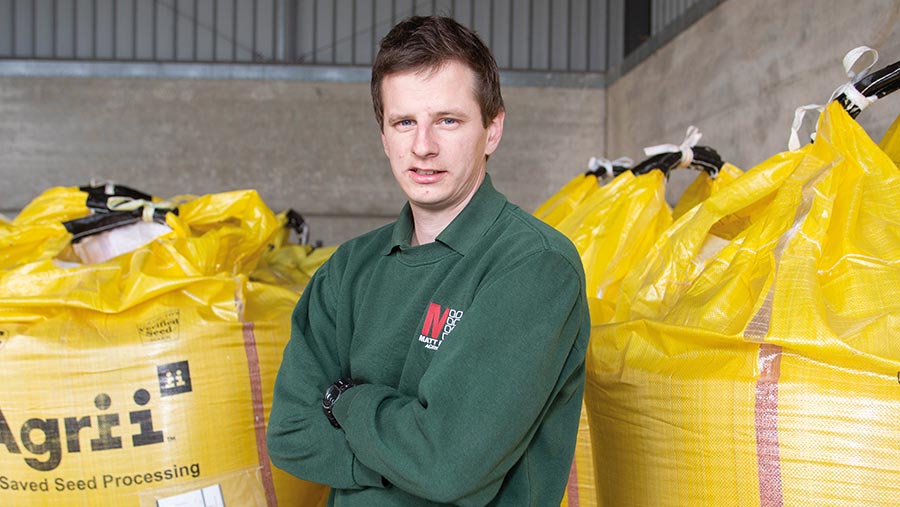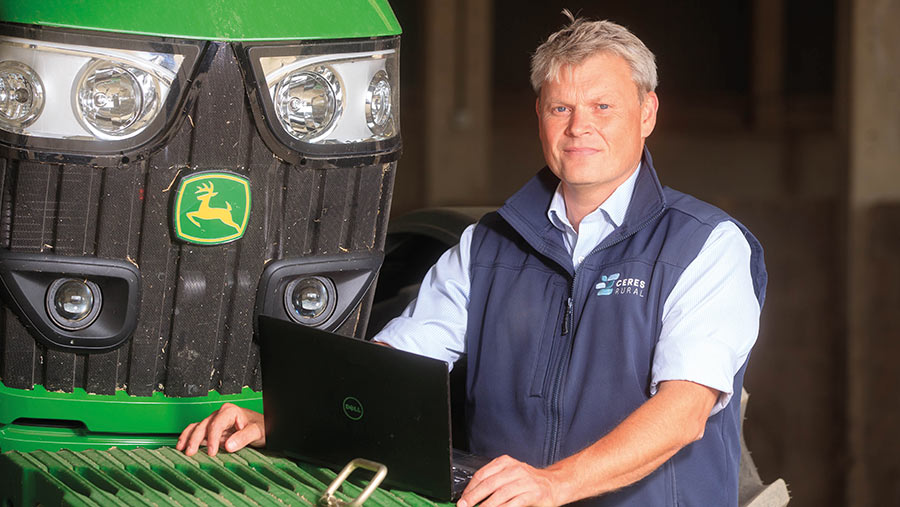Inatreq: Needless risk or essential wheat fungicide?
 © Tim Scrivener
© Tim Scrivener An estimated 5-7% of users of Inatreq-containing fungicides experienced problems with sprayer component damage after applying them last year, putting products such as Univoq under intense scrutiny this year.
In its first full year of commercial use, a volley of complaints was received by manufacturer Corteva about the T2 fungicides, which the company has since explained as being caused by a complex of factors, all of which had to converge before issues occurred.
See also: Will arable farmers opt for Sustainable Farming Incentive?
After a lengthy investigation, Corteva has highlighted five key areas for attention, as well as emphasising the importance of good sprayer hygiene.
The materials used for sprayer seals and diaphragms, the age of these parts, the concentration of the spray solution, the duration of contact between the spray solution and the sprayer parts, along with individual user practices, are all possible reasons for the failure of anti-drip mechanisms.
Products containing Inatreq (fenpicoxamid)
The guidance covers the following products:
- Univoq
- Peqtiga
- Questar
- Peacoq
- Aquino
- Apaveq
- Inconiq
As a result, it has issued new best practice application advice and sprayer hygiene guidance ahead of the 2023 spraying season (see “Corteva’s application advice for 2023”).
Corteva has also come up with a “stewardship support” offer – a £200 goodwill gesture towards the cost of sprayer parts purchased in conjunction with products containing Inatreq. This is limited to 5,000 applicants and will cost the company £1m.
“The vast majority of users didn’t have a problem,” points out a national distributor. “Where they did occur, the common factor was a long period of time between changing parts on a sprayer.”
The other issue that arose in such an ideal spraying year was the temptation to leave the product in the tank after a late finish and in anticipation of an early start the next day, so bypassing basic hygiene procedures, he adds.
Corteva’s application advice for 2023
- Ideally use a minimum spray water volume of 200 litres/ha – if using a lower water volume, the spray concentration should not exceed 0.7%.
- Do not leave Inatreq active spray solution in the tank overnight.
- Rinse the sprayer tank, pump and liner through at the end of each day’s spraying.
- Do not use through pulse width modulation equipped sprayers.
- Replace pump diaphragms with new ones during winter maintenance – ideally with Blueflex or NBR.
- Abide by pump manufacturers’ service recommendations.
- Ramsey box – replace diaphragm seal with new during winter maintenance.
- Anti-drip diaphragm – EPDM parts are recommended or operators can modify air shut-off anti-drip valve to use Teflon replacements. If they can’t, replace with new before spraying Inatreq.
Case study: Ashley Jones, Saltash, Cornwall
It will be business as usual for farmer and agronomist Ashley Jones in Cornwall this year, who used Univoq at T2 in 2022 and experienced no problems whatsoever.
He plans to repeat his use of the product in 2023, as septoria is the main disease target in the South West in most years and he is convinced about the fungicide’s superior activity on the pathogen.

Ashley Jones © AHDB
He also welcomes the opportunity to use a different mode of action in his fungicide programme, as it helps to take the pressure off older active ingredients and builds some much-needed resilience into his disease control strategy.
Mr Jones, who has just completed his stint as the AHDB’s Saltash Monitor Farm host, applied the product in 100 litres/ha of water to winter wheat on both his farm and those of his customers, without any unexpected damage to his sprayer or unwanted effects on the crop.
“I don’t know anyone in Cornwall who had problems with applications of Inatreq-containing fungicides last year,” he says.
While he used a very simple mix of Univoq plus Bittersalz, those who did see damage were using very complex tank mixes, he believes, which may have contributed to the problems they encountered.
In total, he applied Univoq to just over 100ha of wheat through a trailed John Deere sprayer.
Although disease levels were low in such a hot, dry season, crops did stay greener for longer and Mr Jones picked up a YEN award for the highest-yielding wheat crop in the South West, with a remarkable 15.4t/ha.
He is aware of the guidance that Corteva has issued for the forthcoming season, but hasn’t studied it in detail yet.
Water volume is the one area he may adjust, as he is reluctant to go too low and not follow advice. “Univoq is a very good product and it’s one that we really need in the South West,” he points out.
“In most years, we face a real onslaught of septoria, so it’s important that we have the best products at our disposal. Having had a very good experience with it in 2022, I have no reason not to make good use of it again.”
Case study: Matt Redman, Cambridgeshire
Despite using Univoq at T2 without any adverse effects last year, Farmer Focus writer and AHDB Cambridge Monitor Farm host Matt Redman has made the decision to avoid it this year.
Having studied the new application guidelines and considered how they would work in practice, he has decided not to take the risk of any downtime or changes to his fungicide strategy.

Matt Redman © Tim Scrivener
The main stumbling block is the water volume of 200 litres/ha, which is higher than he would normally use, but he is also keen to keep his sprayer working all season – as it covers his own farm and those of his contracting clients.
“It’s not the right time to be taking on any more risk or causing my customers additional concerns,” he says.
“We didn’t see any problems last year, but I don’t want to jeopardise our operations, especially in the current economic climate.”
Agronomist’s view
Using Univoq comes with caveats this year, says Farmers Weekly Arable Adviser of the Year, Jock Willmott of Ceres Rural.
For this reason, he understands why some growers won’t want to take the risk, especially those with large areas to spray and where downtime would put them under even more pressure.

Jock Willmott © Tim Scrivener
“It won’t be as popular,” he says. “That’s a shame because it is a good product and we need it in the market, but whether you use it or not is a conversation that every grower needs to have with their agronomist.”
While there’s a very slim chance that problems will occur, the final decision must be taken by the grower, he insists.
“If they are aware of the pros and cons, have weighed up the potential risk and are used to spraying at high volumes, then they may wish to go ahead.
“That’s their decision, but no agronomist wants to sell it to a farmer only for them then to have an issue.”
Where Univoq is not going to be part of the 2023 disease control programme, growers need to decide on their alternatives and get organised, he suggests.
“If your spray timing is spot on, you can still achieve the same result on septoria with products such as Revystar [fluxapyroxad + mefentrifluconazole].
“But bear in mind that switching to other fungicides is going to put pressure on supplies, so get your orders in.”

